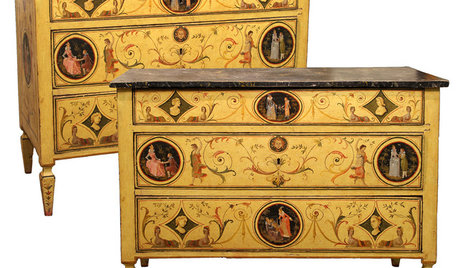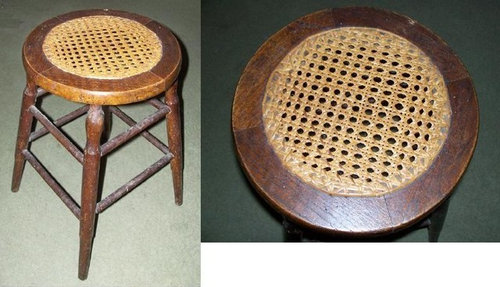Does caning on furniture necessarily mean it's antique?
debodun
10 years ago
Related Stories

BUDGET DECORATINGFlea Market Treasures: The Cane Chair
Just look what you can do with a common used-furniture find
Full Story
FURNITURESmart Shopper: How to Judge Antique Furniture Quality
Pick the treasures from the trash without expert experience by learning how to evaluate antiques and what questions to ask
Full Story
VINTAGE STYLEBet Your Bottom Dollar on Cane Chairs for Stylish Seating
Cane and Chippendale-style chairs are so easy to customize, you can make one work in a dining space or home office of any style
Full Story
FEEL-GOOD HOMEDoes Your Home Make You Happy?
How to design an interior that speaks to your heart as well as your eyes
Full Story
FURNITUREAntiques Shopping? Let Love Guide Your Search
If discovering aged treasures is your passion, you’re not alone. Find a kindred spirit and his buying tips here
Full Story
REMODELING GUIDESContractor Tips: What Your Contractor Really Means
Translate your contractor's lingo to get the communication on your home project right
Full Story
ARCHITECTURE10 Custom Doors That Uncover Meaning
Break out of the standard-door rut by learning a significance that few people ever consider
Full Story
ANTIQUESDecorating With Antiques: Painted Furniture Brings the Eye Candy
Too much brown got you down? Lighten up with antique furniture decorated with artistic designs or awash in a lovely hue
Full Story
MOST POPULARWhen Does a House Become a Home?
Getting settled can take more than arranging all your stuff. Discover how to make a real connection with where you live
Full Story
KITCHEN DESIGNHow Much Does a Kitchen Makeover Cost?
See what upgrades you can expect in 3 budget ranges, from basic swap-outs to full-on overhauls
Full StorySponsored
Industry Leading Interior Designers & Decorators in Franklin County
More Discussions











triciae
Fori
Related Professionals
Fort Carson Furniture & Accessories · Palmetto Bay Furniture & Accessories · Brookfield Painters · Lakeville Painters · Roseville Painters · Cupertino Painters · Dumont Painters · Kenner Painters · Romulus Painters · Framingham Furniture & Accessories · Sioux Falls Furniture & Accessories · Davidson Furniture & Accessories · Hoffman Estates Furniture & Accessories · Los Angeles Professional Organizers · San Antonio Professional Organizerslazy_gardens
chibimimi
Stocky
chibimimi